Along with Louis and Niamh we have taken on 4 acres of land in a little village called Carrigadrohid- pronounced carriG-a-droHid.
It’s about 4 miles east of a large town called Macroom and less than 30 mins West of Cork. It’s inland but close to the River Lee and several lakes nearby along with Blarney Castle only about 30 km away.
The West Cork coast and its beautiful sandy beaches are only 40 mins and Killarney a very famous national park with loads of hikes, lakes and mountain walks in the picturesque County of Kerry is under an hour away. Of course locally there are lots of walks and places to visit which I got to do and will write about in my next blog.









The Long Cottage as we have come to call it, is a traditional Irish stone building, a slate roof with 2 feet thick walls with a small extension at the back for what was the kitchen and bathroom. Attached to the cottage is another stone building that would have been used for storage and livestock, most probably cattle.
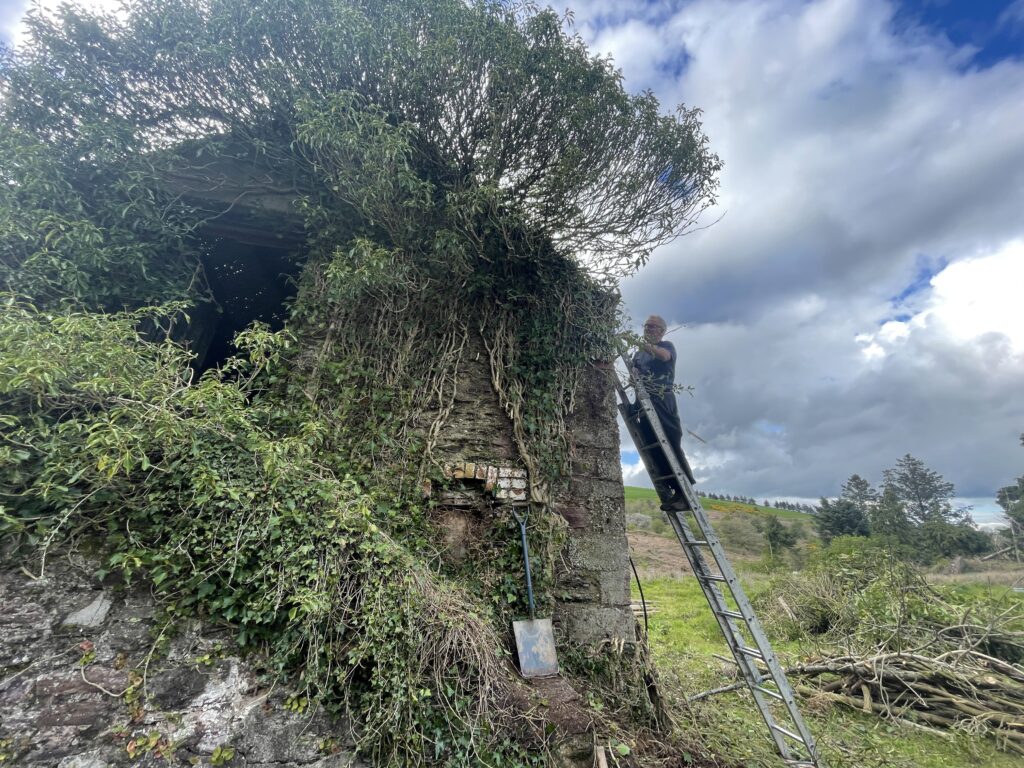
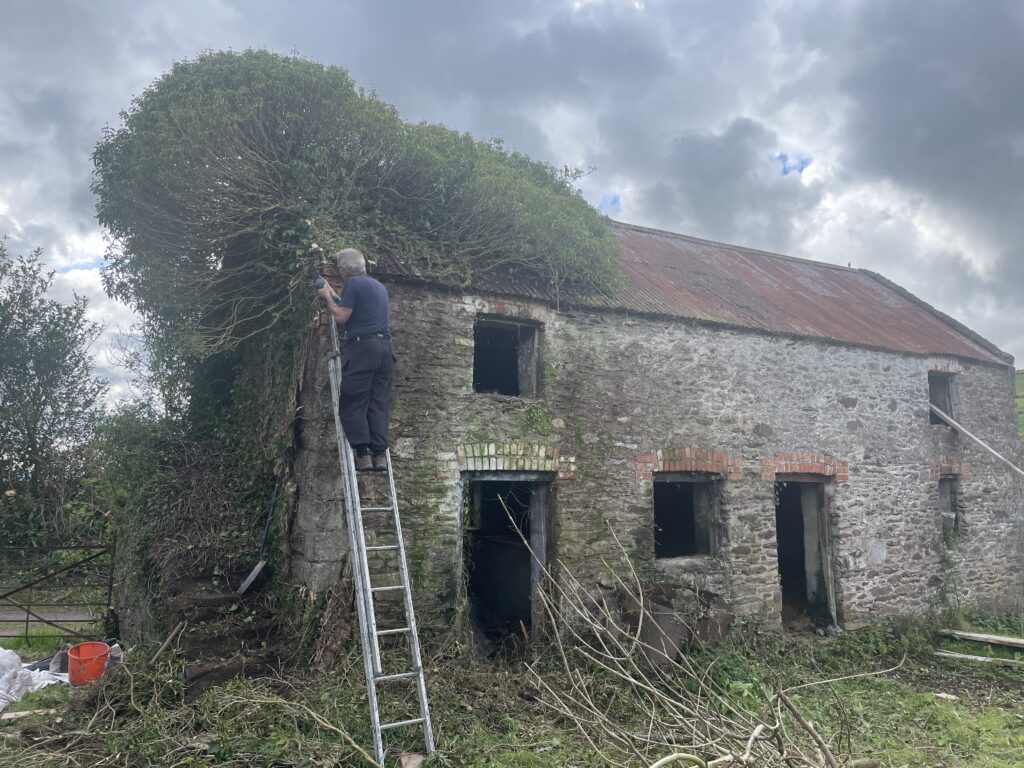
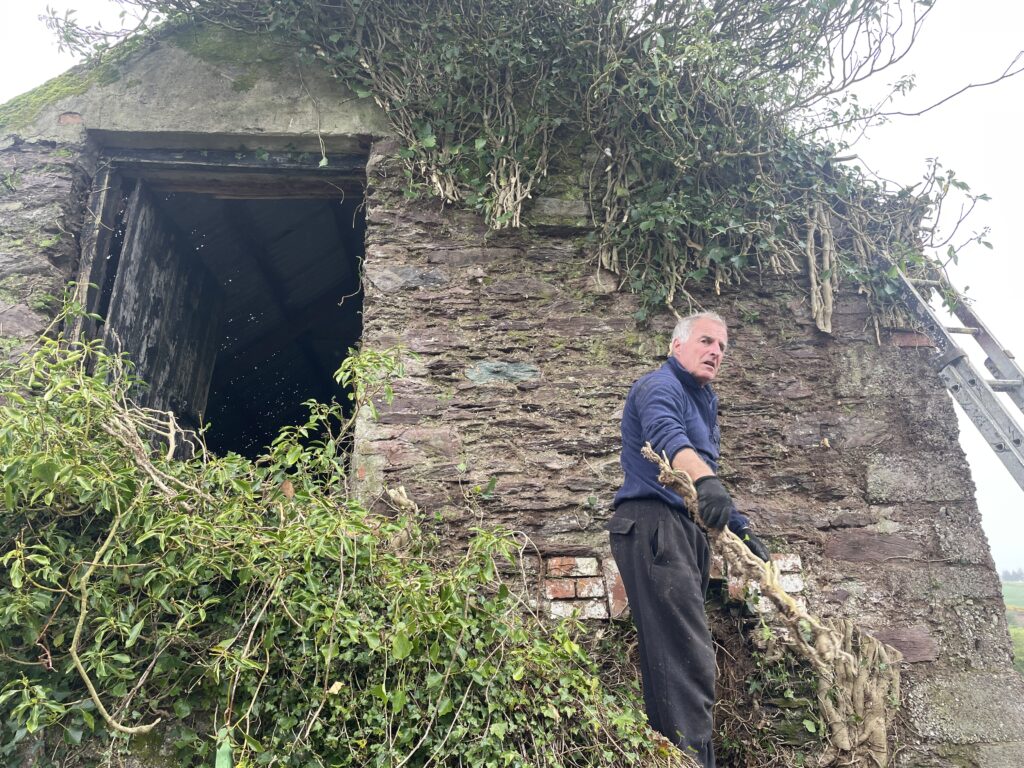





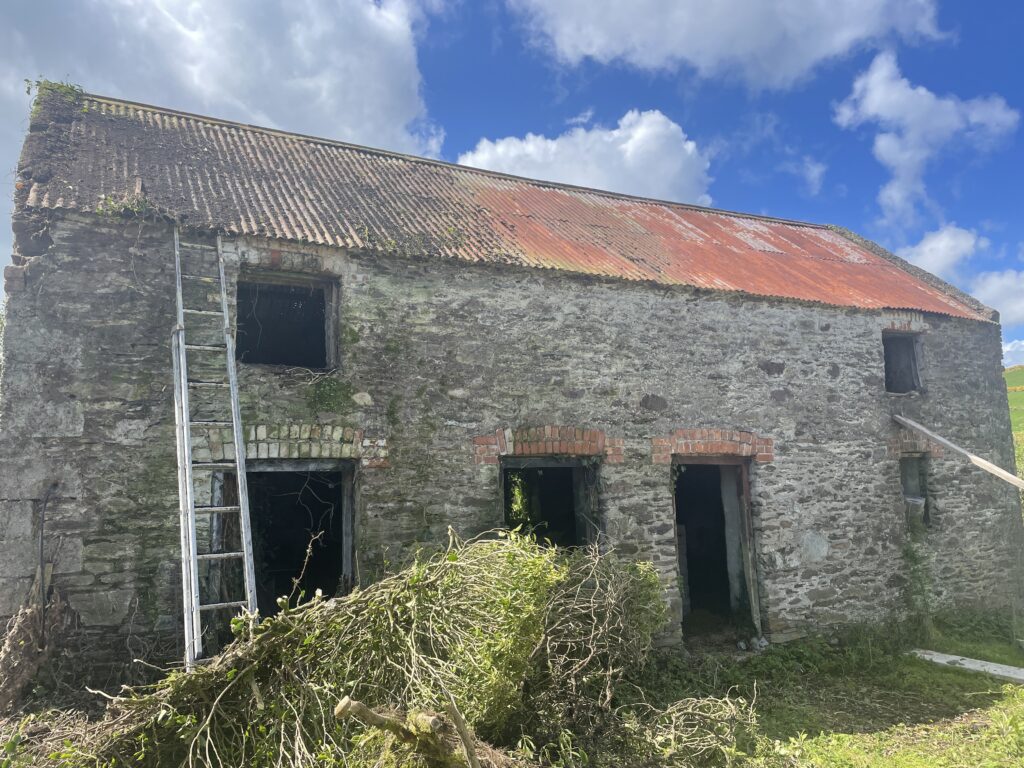






Out the back there’s the magnificent large 2 storey stone barn which we have since found out was a ‘Piggery’ built at right angles to the Long Cottage. The roof of this building is typically corrugated iron.



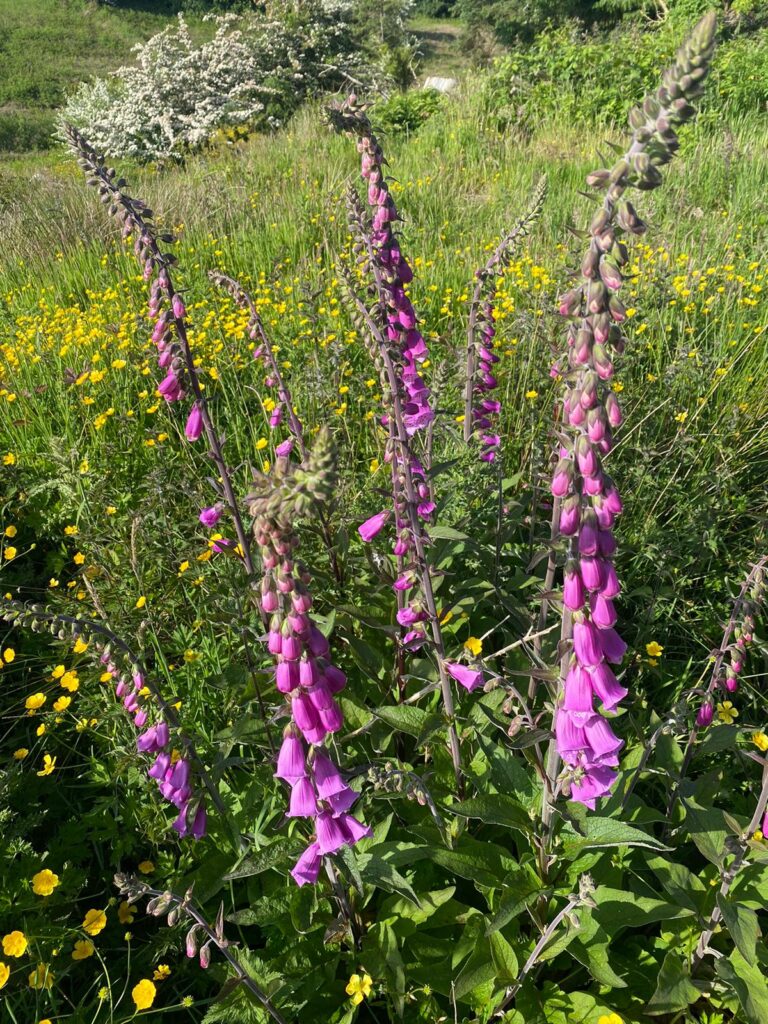
The property surrounds a large courtyard with an open barn/garage with corrugated roof and another open barn out the back for hay storage. The land includes almost 4 acres of sloped garden made up of wild grasses, gorse, brambles, elders, Hawthorne bushes mixture of spruces and bracken on a bed of rock creating a wild and wonderful meadow full of local flora and fauna. The land is high up so the views from all around are far reaching and pretty awesome. As the ‘back garden’ is north facing and looks out onto a hillside it reflects the light and sunshine back to us so never feels dark. The sun when it is out is always shining somewhere in the garden. Louis and Niamh have big plans for the garden, creating a native woodland area, an fruit orchard, raised beds and polytunnel and rewilding several acres to attract local wildlife.





Sounds idyllic? Well it truly is for us…. apart from the teeny tiny fact that at the moment and probably for a long while yet this place is not habitable. It’s been derelict for 15 years plus and requires complete renovation to make it habitable. So don’t come rushing over yet unless you are prepared to get stuck into some hard work!
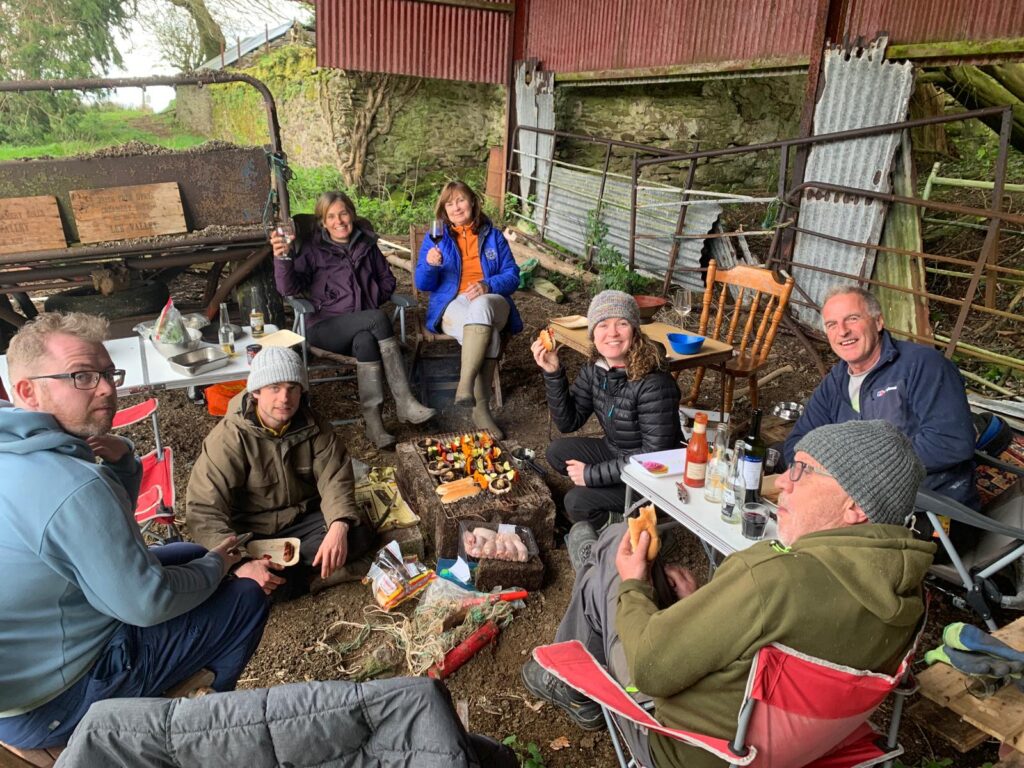


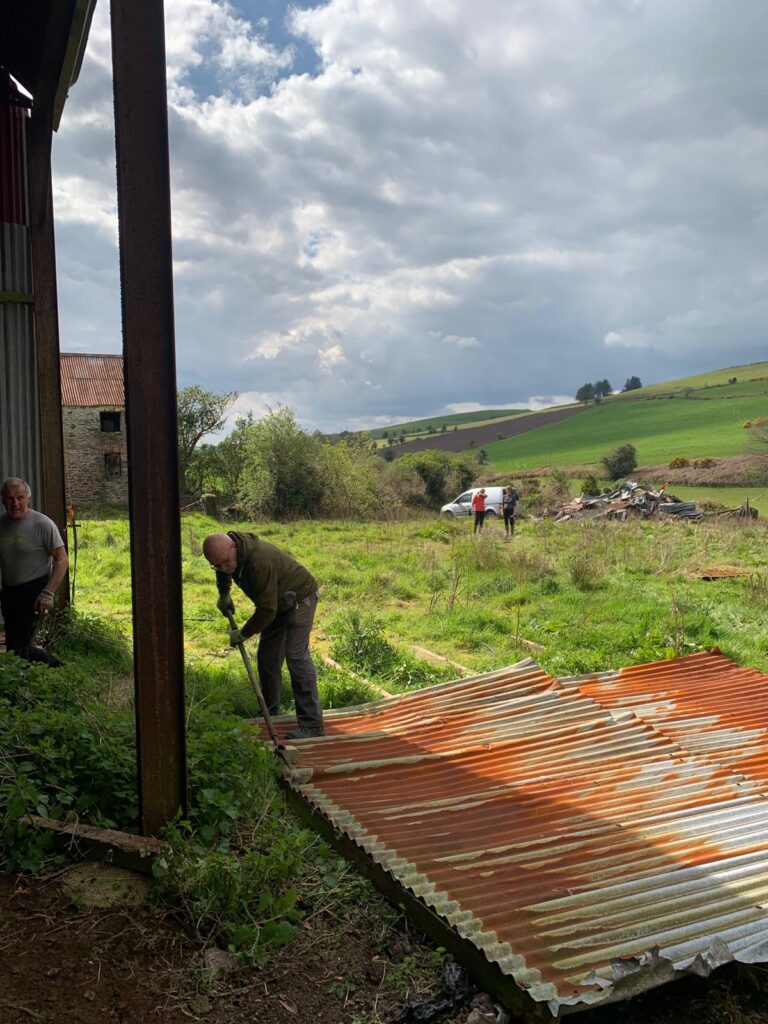



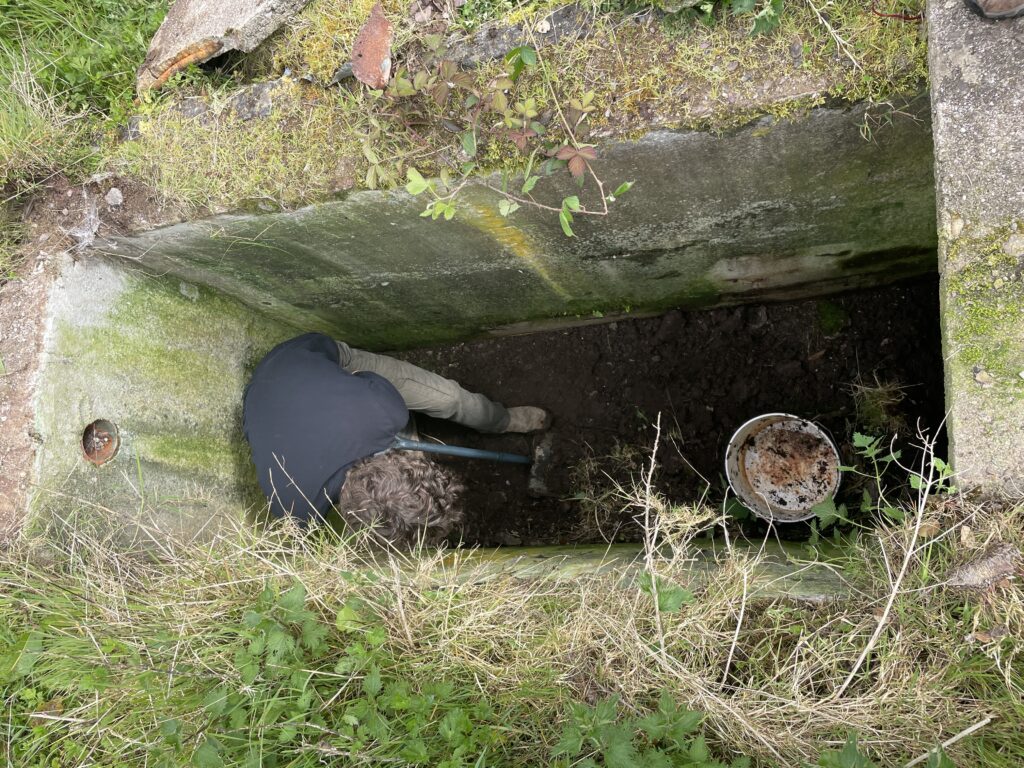



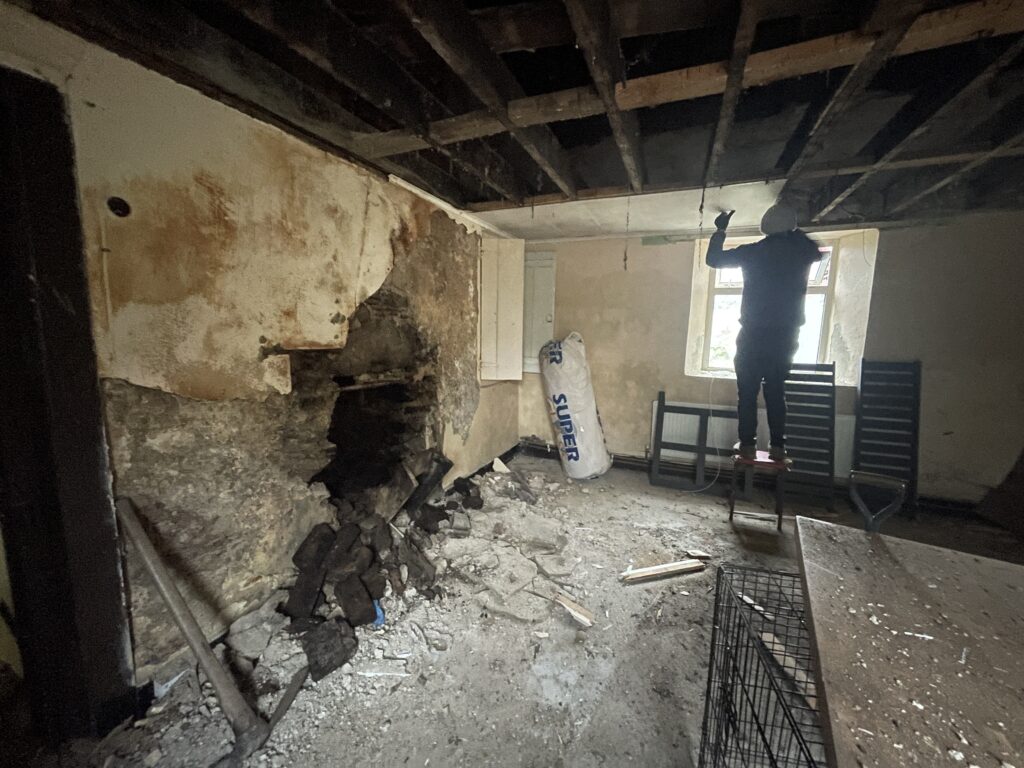

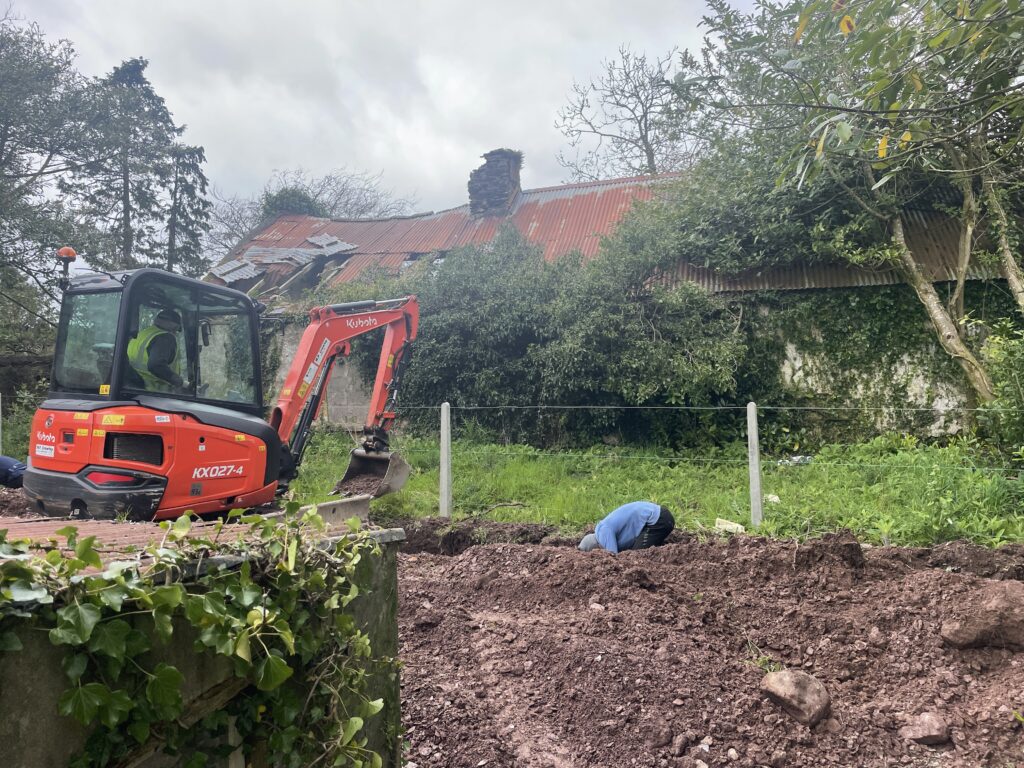
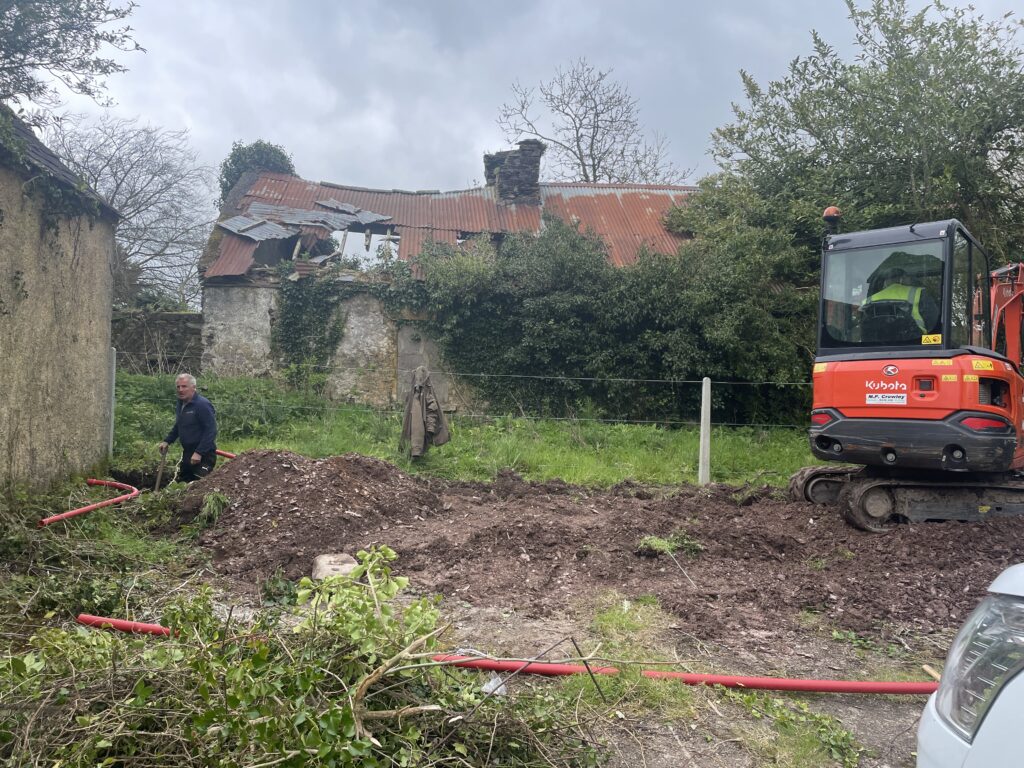


Ireland has the same shortage of housing as the UK and they have many empty and derelict properties so the Irish government have set up Renovation grants of up to €70,000 to assist with those willing to take on the challenge in bringing these properties back to life. Louis and Niamh are going to make use of these grants to help get the cottage back on its feet!!
Bob and I are hoping to convert the Piggery into some accommodation for ourselves although we have been toying with the idea of just building a log cabin on the land. In the end that was too easy an option and was probably above our budget. On discovering the beauty of the Piggery when Bob removed years and years of ivy from outside and Niamh and I stripped the inside of rubbish we soon fell in love with the building and think with some hard work and innovative design it could be something really special.
So where do we start? In the three and half weeks that we were there we managed to get through a pile of work. Mainly clearing rubbish from inside all the buildings, collecting metal from around the land into 2 massive piles for collection, filling a skip with shoes, rubble, shoes, old clothes, shoes, carpets, shoes, flooring and more shoes…. (for some reason the previous owner had lots of old shoes lying around as well as empty glass bottles of Guinness!) We cleared ivy, weeds and grasses from the front and inside of the buildings, cut down the very invasive laurels that were overgrown. We met the farmer who rents some land next door, Dennis, a very friendly local who farms a field for silage and a smaller field at the bottom of our land for his 6 prize ewes. He kindly gave us permission to add our huge pile of garden waste to his and we would burn it one night. We then had our own bonfire burning wood panelling removed from ceilings, beams, rotten joists and other bits of wood lying around that couldn’t be saved for firewood.



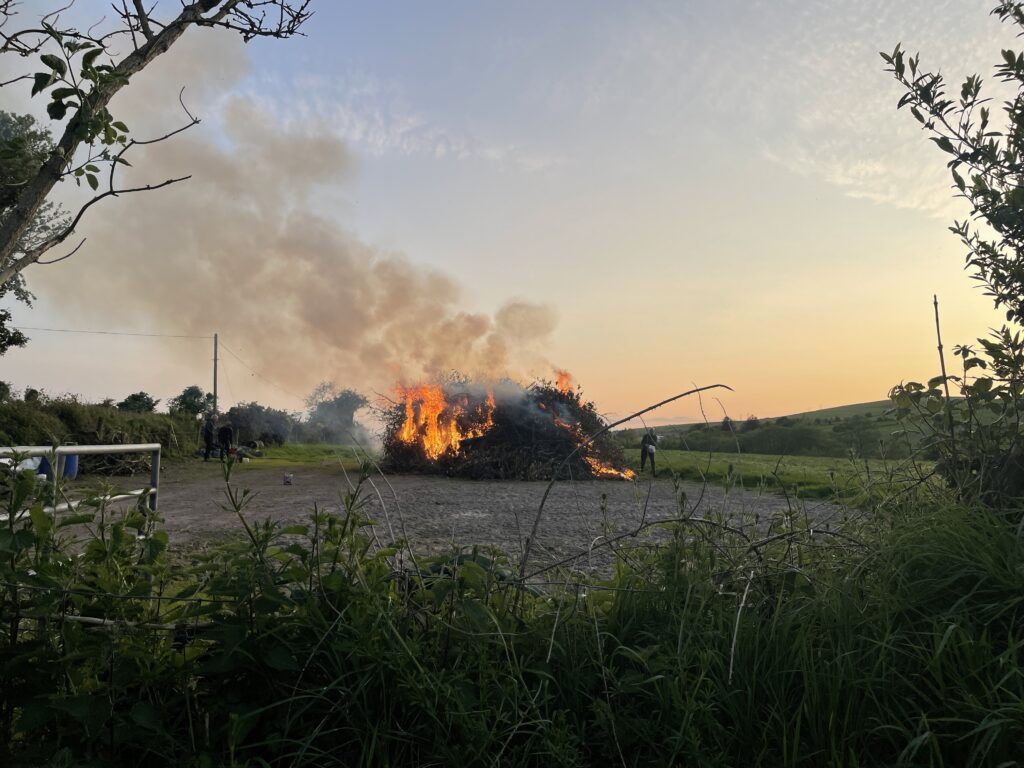

















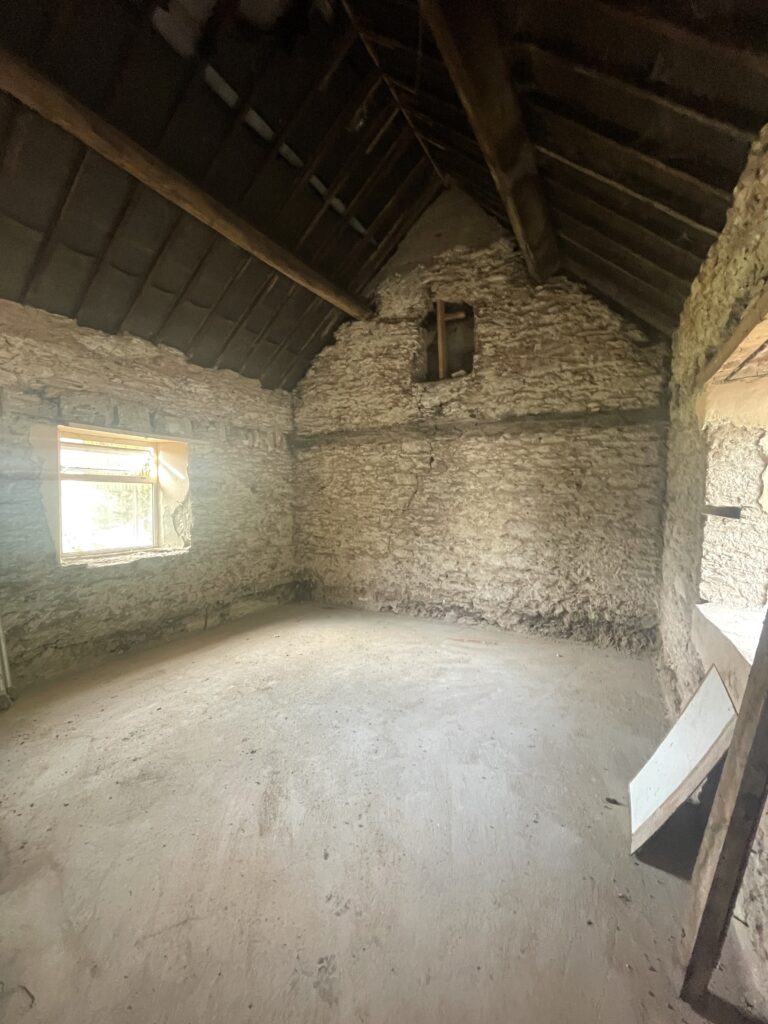
Bob and I spent days chipping off and barrelling the cement render from the inside walls of the cottage so that we could see what was behind. These old stone buildings were built over 200 years ago before cement and plaster, and were left un-rendered to breathe and moisture would evaporate naturally, but about 60/70 years ago they were all cement rendered inside and out to become more ‘insulated’ which has caused massive problem’s with damp, leading to crumbling stone and rotten roofs. Louis and Niamh are keen to remove all the cement render and use lime plaster to repoint and seal the walls. A huge task itself and will take many months to get done but it will be worth it. So as we made a start with removing the render in one of the rooms around the fireplace we revealed not only an absolutely huge fireplace (they had built a smaller fireplace inside) but the stonework that framed it was jaw dropping!
We have had no running water, no electricity and no working toilet so the motorhome was a godsend for us all. I discovered how good the solar panels were – for the next 4 weeks we were relying almost totally on those for power. We used gas for cooking but had to drive the van 30 minutes away to get it refilled so tried to limit how often we did this. I found a drinking water tap in a small parking area with picnic benches about 3 miles away so every 3 days I would take 10 x 5litre bottles for refilling. There were public toilets in Macroom town square where we could empty the toilet cassette from the motorhome. Probably not the best option but we had plenty of bushes for ‘wild wees’ and Louis, Niamh and I would go into town each morning for coffee in a café where we could make use of their facilities.



The Well Water Company provided us with a pump and a generator to test the flow of the water from our well and to find out the depth of the well and if it would provide enough water each day for a household. We had to switch on the pump and let it run for an hour twice a day. This meant we were able to use the water from the well to fill our moho tank for showering and washing-up but not to drink. We could also use the generator occasionally to heat up the water and save on gas. The generator was pretty old and guzzled petrol so we couldn’t keep it running too much and we were always worried that they were going to take it away once they had tested the water.
You learn to improvise and adjust your usual routine when you are without the basics, you really appreciate each shower you have carefully using as little hot water as possible. Bob and I showered only twice a week using very little hot water, we often wore the same clothes for days on end (excluding underwear of course). One hot day my hair was so full of dust that I took myself off to the waterfall nearby and rinsed my hair in the cold water!
I cooked simple meals that didn’t require lots of cooking and used lots of fresh ingredients, luckily I was able to shop daily and we had little food waste. Talking of waste, we recycled everything we could and we had very little rubbish which was a blessing as in Ireland removing your rubbish is quite a challenge, there are no rubbish bins anywhere! I think in the 4 weeks we were there we had 1 black bin liner of which I actually bought home with me to dispose of – it was basically full of plastic food wrapping…..everything else we recycled.
It was very exciting the day Cork Metals came along in their huge truck with a grab crane to remove the two huge piles of scrap metal that have built up and spoiled our view. The driver made an easy job of not only driving up the very narrow green striped country lanes to get to us but also manoeuvring his truck and crane to collect every single piece of metal, some of which had been there a while and was overgrown with weeds.




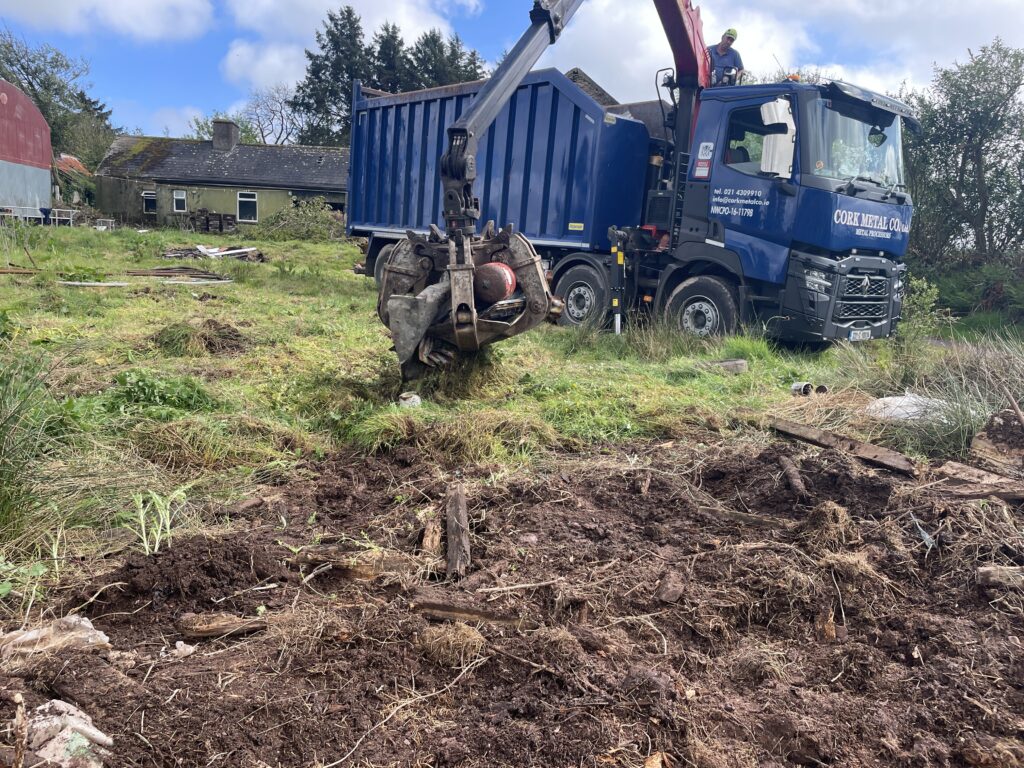

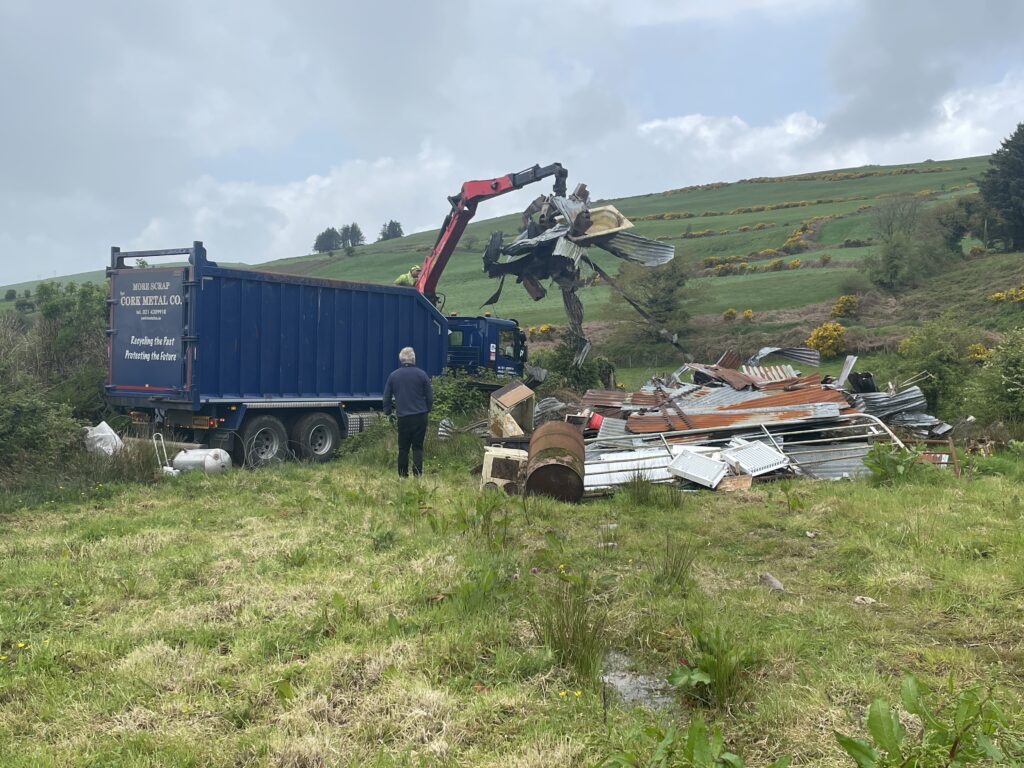

Bob is an electrician by trade so he was determined to get the electrics reconnected. This proved to be a lot harder than he had expected. Everything that he assumed would be accepted wasn’t as the regulations were different in Ireland and often didn’t make sense to him.




As Bob was not an Irish registered electrician he was unable to certify his work there, so couldn’t get away with doing things differently as we required a local electrician to test and certify to Irish Safe Electric standards before the electric board would come and switch the power back on.
As I write, this still hasn’t happened but we have got at least as far as we can – we eventually got the electrician to come on the last day we were there and he certified the temporary supply and promised that he would get the certificate sent off – that was about as much as we could hope for and now its in his hands.
We have discovered that in Ireland things happen all in good time, not at the pace you might want them to happen so you just have to sit back patiently and wait. The grants for the renovation will take a lot of preparation, we need advice from specialists and we have to complete all costings and quotes before we can apply and then you cant start any of the work until you have approval from the council. So we decided it was time to get back to the UK, take a look at UK housing market, visit some family and perhaps fit in one more trip before we come back and to start more work.
In the meantime Louis and Niamh took over our pitch in the courtyard with a caravan that will be their home whilst they renovate.





One Response
Wow all exciting stuff, great photos! It will be nice to see the before and after. Can’t wait to visit when it’s ready 😀